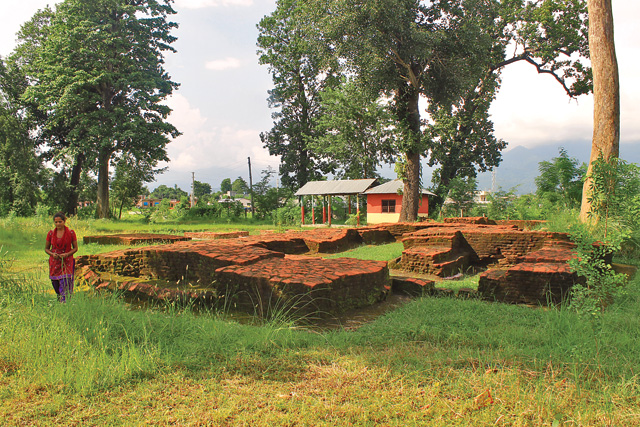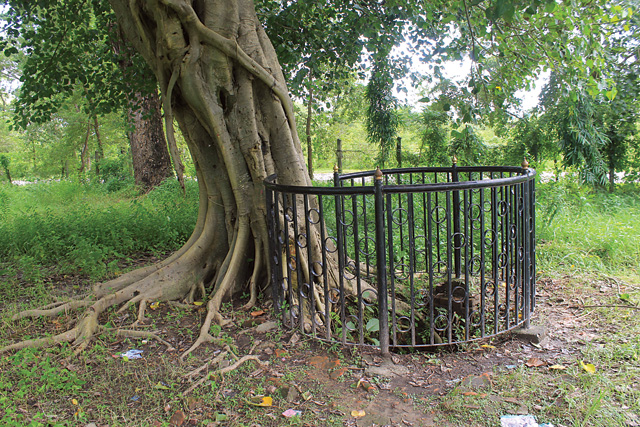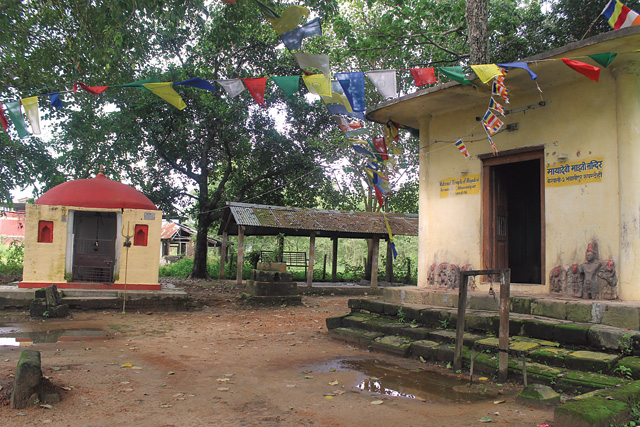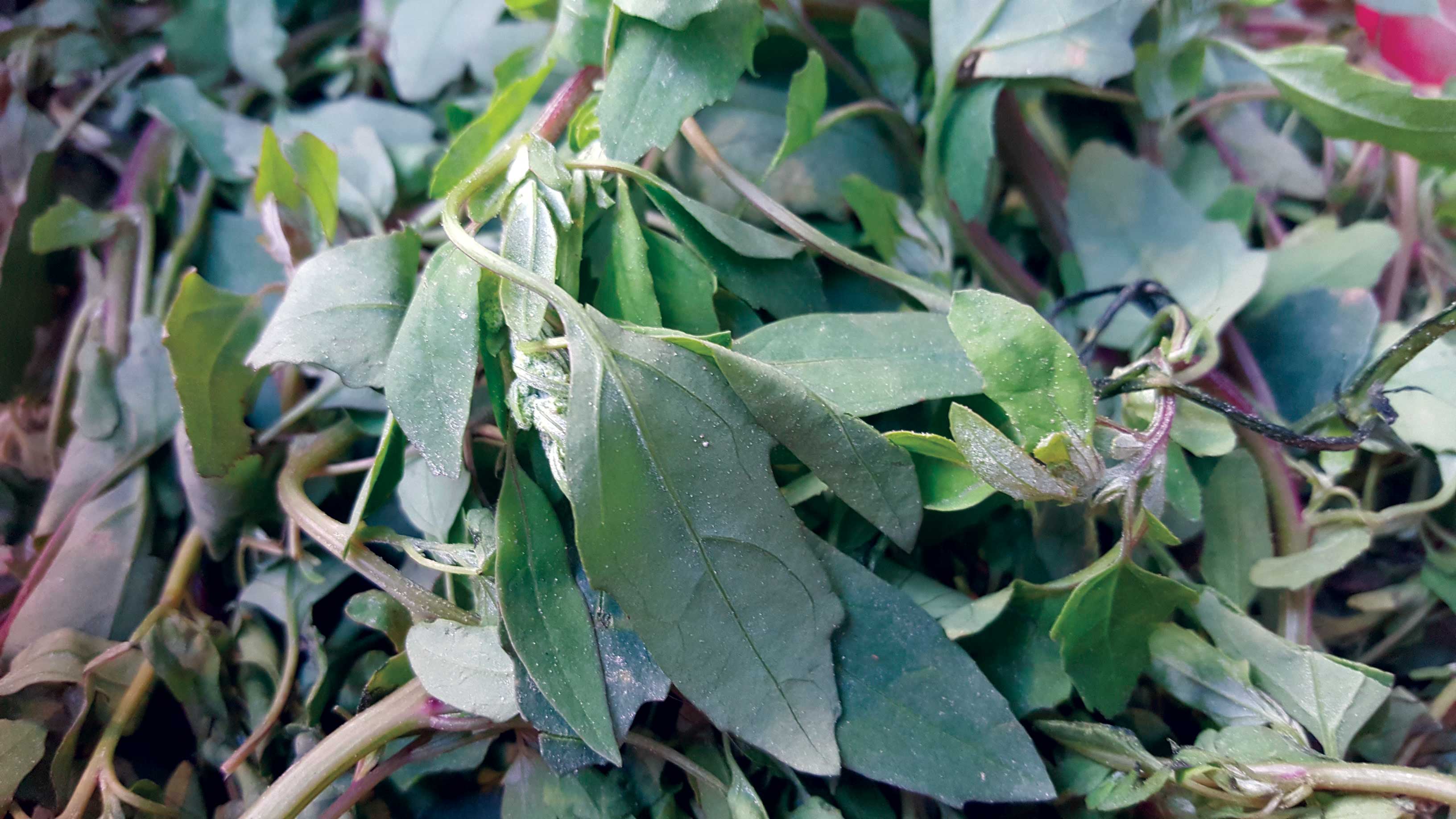Ramgram and Devadaha: Ancient Buddhist Sites.

After Mahaparinirvana of Lord Buddha in Kushinagar in 543 BC, eight great kings sent their envoys to Kushinara (present day Kushinagar, India) and demanded a piece of Buddha’s relic for their kingdoms. Malla king of Kushinara denied to give any of Buddha’s relic to other kings saying that Lord Buddha came to his kingdom and attained Mahapariniravana, so Lord Buddha’s relics belongs to his kingdom. He asked other kings that if diamonds and golds were discovered in their kingdoms, would they share it with other kings. Kings of 7 kingdoms were ready to fight with Kushinara to get piece of Buddha’s relic. An omniscient Brahmin named Dron who also came to Kushinagar to pay homage to Buddha’s last rites, thought that if war is waged for the sake of Buddha’s relics after his Mahaparinirvana, it was against what Buddha had preached his entire life after enlightenment. So, the monk Dron conveyed the message of Buddha to the Malla King of Kushinara and requested him to equally distribute Lord Buddha’s relics to other kings and prevent a bloodshed. King of Kushinara felt remorse for his selfishness and agreed to distribute Buddha’s relics to other kings and follow the path of Buddha’s non-violence principle. The royal monk asked all the Kings to come to the place where Buddha’s relics were kept. He gave one piece of Buddha’s relics to each of 8 kings in presence of all the kings. One of seven other kings who received Buddha’s relic was Koliya king of Ramagram. He brought relic with great joy and paraded through the city before resting it in a huge stupa. He built great Mahastupa enshrining Buddha’s relic across the Jharahi river in Ramgram.
The Mahaparinirvana sutra says that of the Buddha’s four tooth relics, one was rested in Ramgram.

Emperor Ashoka (302 – 232 BCE) opened all 7 stupas containing Buddha’s relics and built 84,000 stupas to house these relics but when he came to Ramgram to get the relic of Buddha, he witnessed a dragon king guarding the stupa and elephants offering flowers and sprinkling water. Seeing great devotion of the dragon king and wild animals to the stupa, Ashoka decided to leave it untouched. Among the original eight stupas with Buddha’s relics, Ramgram stupa is the only one which can be seen in its original form.
Ramgram stupa was discovered by archaeologist of Asiatic Society of Bengal Dr. W. Hoey in 1899 as a huge round brick mound totally hidden by grass and bushes. But it took another 65 years to confirm that the brick mound was a stupa with Buddha’s relics. Department of Archaeology of Nepal carried out systematic excavation in Ramgram stupa in 1977 and shed light on the history of the stupa. Various claywares of different sizes and shapes, beads, bangles and other objects were discovered during the excavation. The archaeological findings showed that the Ramgram stupa consists of four distinctive stages of the stupa added by various royal dynasties – Mauryan, Sunga, Kusan and Gupta periods. During reign of these royal dynasties, they fiercely protected the original stupa and added structures around the original stupa. It showed their devotion and respect to Ramagram stupa.
At present Ramgram stupa is seven meters in height and built entirely with bricks and clay. It is well taken care of by Lumbini Development Trust (LDT). Ramgram stupa and its complex was fenced and guarded by a watchman. Northern side of the stupa is covered by marshland while southern part is covered by thick trees of different species all the way to main entrance gate. Stupa cannot be seen from main entrance gate due to these thick trees.
At west side of Ramgram stupa, a Japanese Buddhist organisation - Bushinokai – has built a small but beautiful garden. In the middle of the garden lies a statue of baby Buddha housed inside a small temple. On the sideways to baby Buddha, there are ornamental plants and trees of different species making the garden look beautiful. Quiet and serene surrounding of the Ramgram stupa and adjacent Japanese Buddhist garden would makes visitors feel at peace.
At southwest corner of the stupa, there is a huge tree. Devotees from around the world have put prayer flags in their language around the tree. LDT has put the signboard requesting visitors not to climb the stupa.
Ramgram is situated just 3 km south of Parasi bazar, district headquarters of Nawalparasi district, 28.6 km east of Bhairahawa and about 40 km east from Lumbini. From Parasi Bazar, one needs to go 3 km south to Ujjaini chowk. There is a big decorative gate at east side of the chowk. Pass through the gate, a small narrow road leads to Ramgram stupa located about 600 m away from the gate.

DEVDAHA
Devdaha is the ancient capital of Koliya kingdom. It is located 240 km southwest from Kathmandu, 54 km east of Lumbini and 25 km northwest from Ramgram across the Rohini River on the foothills of Churia hills. It is maternal home town of queen Mayadevi who gave birth to Siddartha Gautam, Prajapati Gautami (step mother) and queen Yashodhara (consort). It was a place where Siddhartha Gautam spent some years of his childhood. Seven years after enlightenment, Buddha visited Devdaha and converted many Koliyans and ordained a Jain sadhu Nigrantha Nathputra.
Devdaha is an important historical site for Koliya dynasty but no proper restoration has been carried out yet. Many significant ruins have been found around Devdaha. The most important sites to visit are Bairimai/Kanyamai, Bhawanipur and Devdaha.
BHAWANIPUR:
In Kerwani village, there is a small garden consisting of two small temples believed to be the parental home of Mayadevi. One temple is devoted to queen Mayadevi with several stone statues of Mayadevi, Lord Vishnu and other Hindu deities. Next to it is a small Shiva temple. Three big pipal trees stand guard in front of these two temples protecting them from sun. Nearby lies a broken piece of small round stone pillar believed to be put by Emperor Ashoka at the same period as in Lumbini, Niglihawa and Gotihawa. An ancient round well built from red bricks can be seen at the foot of big banyan tree inside the Mayadevi’s maternal home garden. The whole compound was fenced and managed by Koliya Kingdom of Buddha’s Maternal Area Development Committee in Kerwani village.

DEVDAHA KANYAMAI (PRAJAPATI GAUTAMI TEMPLE)
There are several ruins of wells, meditation place, walls of old fort and palaces in Devdaha Kanyamai located about 300m away from main road in Shitalnagar of Devdaha municipality of Rupandehi district. Statues recovered during the excavation have been put into a small modern temple at entrance to the ruins. The site stretches from north to south with several brick mounds. the courtyard was used as a place to worship gods by Prajapati Gautam, who took care of Gautam Buddha after the death of His Mother Mayadevi. People worship her as a Goddess for her services to of Gautam Buddha.

DEVDAHA BAIRIMAI (MAYADEVI TEMPLE)
Bairimai temple located just a few hundred meters away from Kanyamai is a small modern temple devoted to Mayadevi. Hindus consider Buddha as one of re-incarnations of Lord Vishnu and thus Mayadevi who gave birth to Buddha was venerated as Goddess. Ancient ruins have been covered by vegetation and a modern temple was built by the local community dedicated to Queen Mayadevi. Ruins of Kanyamai and Bairimai are stretched several hundred meters and are located along the banks of Kairani river. Archaeologist Ram Bahadur Kunwar found decorated bricks while excavating ancient ruins in 1995 which was similar to the bricks found in Kudan.
DEVDAHA
An ancient Daha (pond) is located one km north from Shitalnagar bazar at East-West Highway (4 km east from Butwal) at the foothills of Siwalik range. It is considered the remnants of ancient Devdaha (Dev = God, Daha = pond in Sanskrit) after which the area is known. The holy pond stretches from north to south and is surrounded by trees of different species. Northern part of pond and other parts are covered with weeds. At the northern end of the pond, there is a small resting place. Giant vines encircling trees are a common sight while walking around the pond.
All these historically and religiously important places lie within a distance of 6 km spread north and south of East-West Highway.










